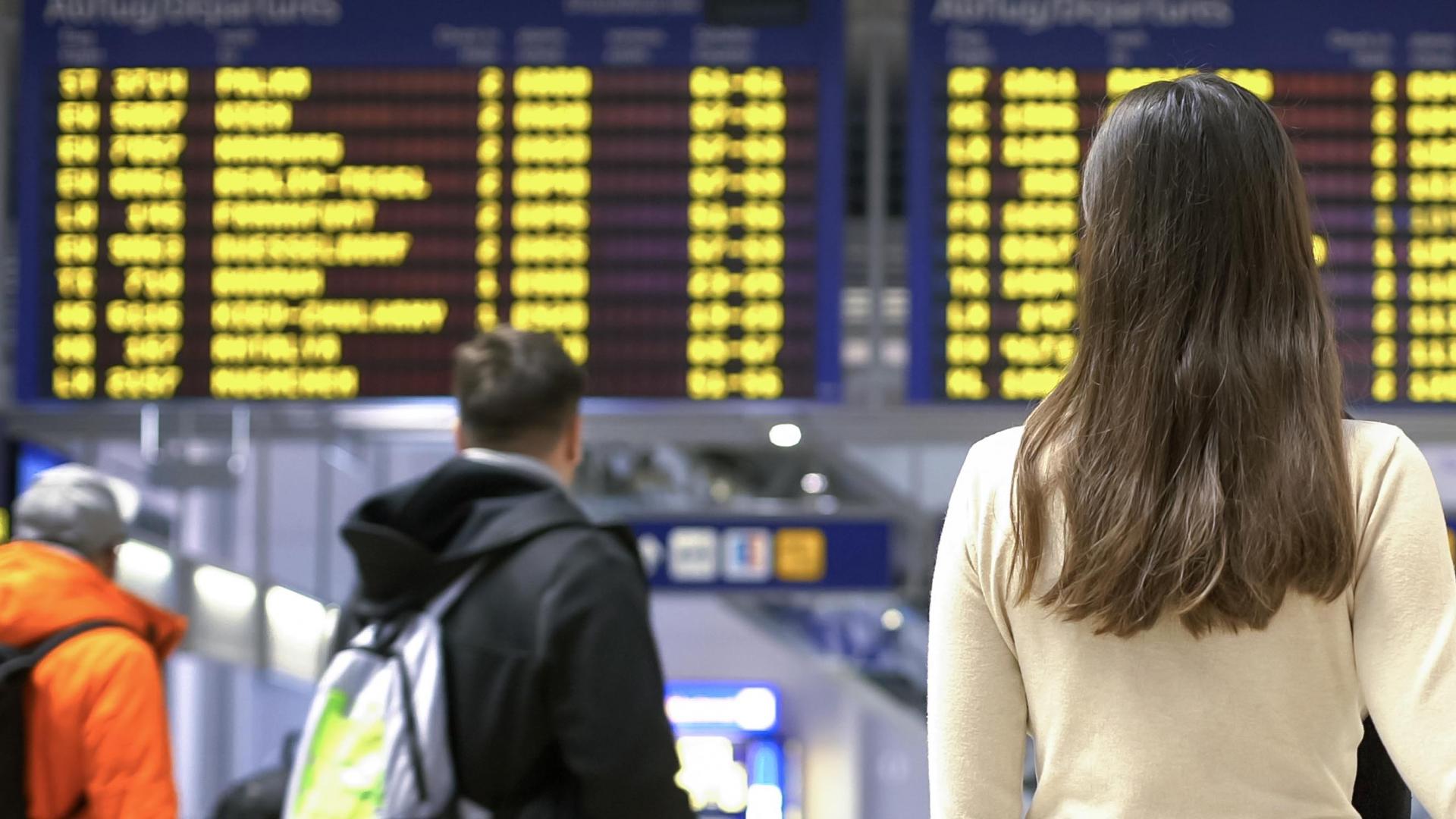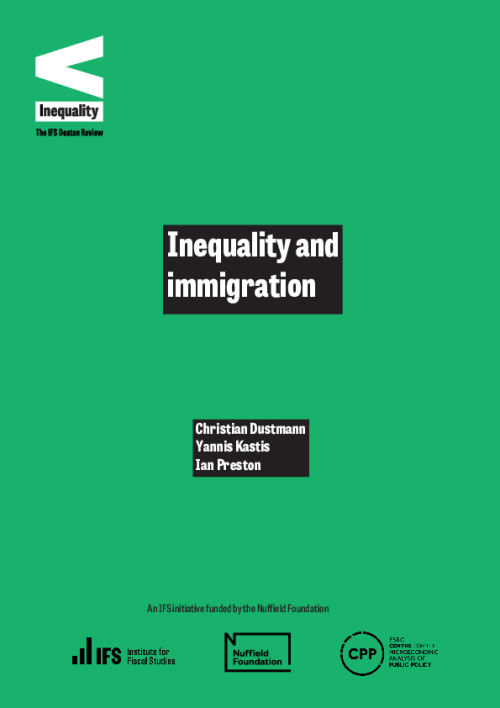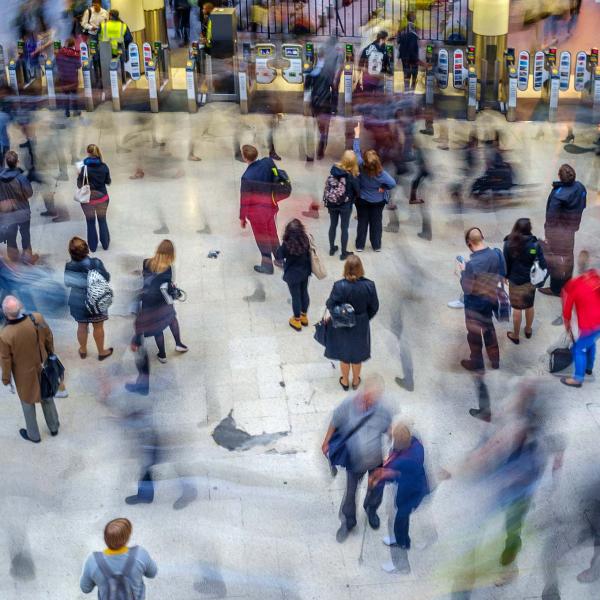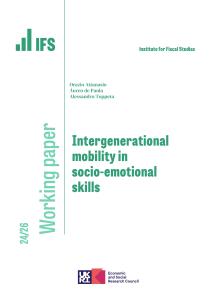This chapter investigates the relationship between immigration and inequality in the UK over the past 40 years. This is a period when the share of foreign-born in the UK population increased from 5.3% in 1975 to 13.4% in 2015. We evaluate the impact immigration had on wage inequality in the UK through two channels: the first is the effect on the earnings distribution of natives and the second is the effect on the composition of the wage-earning population. We find both effects to be very small. We decompose wage inequality into inequality within the immigrant and native groups and inequality between the two groups. We find inequality among immigrants to be consistently higher than inequality among natives. We also examine the impact of immigration on the fiscal budget, and the potentially unequal impact of the ensuing tax implications on natives. In the UK, where immigrants are net fiscal contributors, this is not a factor that aggravates economic inequality. Even though the impact of immigration is found to be small, the way it is perceived across different population groups in the UK varies; a fact mostly attributed to racial and cultural concerns rather than perceived economic competition.
Introduction
This chapter is concerned with the interplay between immigration and inequality. Inequality has many dimensions and may relate to earnings, income, consumption and wealth. Migration can affect inequality between countries, in origin countries and in destination countries. In this chapter, we focus on the relationship between inequality and immigration in destination countries and specifically the UK. It is in the impact that immigration may have on wages, on the composition of the workforces, and on the location of the overall distributions of earnings, in both the short run and over time, where inequality and migration naturally intersect.
A good starting point to understand the basic relationship between migration and inequality is to look at simple models such as those reviewed by Dustmann and Preston (2019). First of all, migration affects inequality between countries. In a competitive model, if individuals move across countries to where their marginal product is highest, this will lead to more efficient allocations of labour (creating a global welfare gain) and will equalise average wages across countries. Migrants themselves are the main beneficiaries, moving to where they can earn higher wages and, to the extent that those who can gain most strongly from this are in poorer parts of the world, this is inequality-reducing. Secondly, there are effects also on the wages of those who do not move. The mechanism here is through labour supply changes, which lead wages in destination regions to fall, and wages in regions where migrants come from to increase.
If we consider that labour is differentiated by skills within countries, then migration may furthermore lead to a reduction or an increase in inequality within countries, following the same mechanism. Unskilled immigration will lead to increased labour competition for unskilled workers in the destination country, leading to possibly falling wages at the low end of the income distribution, but an increase in wages further up. The opposite happens in the origin country. Thus, in this example, migration will lead to an increase in the wage gap between the lowest and highest earners in the destination country but a decrease in the origin country. Skilled migration will have opposite effects.
Returns to other factors of production, such as capital and land, may also change, as the arrival of additional workers makes these more productive; this also will affect inequality, depending upon where in the income distribution the owners of these other factors are found. To the extent that capital and landowners tend to be at the high end of the income distribution, this will tend to increase inequality.
There may be many additional mechanisms by which the gains from migration could be redistributed. Some of the additional earnings that those who migrate obtain may be reallocated to the origin country in terms of remittances. This may lead to an increase in earnings of the families of those who migrated if such remittances are invested productively. This in turn may affect inequality in local communities if the families of those who emigrated (who are usually not the poorest) improve their economic situation in relation to others.
The focus of this chapter is the UK, which is largely a destination country for migration. There are various ways in which immigration can affect inequality in the UK. Through the simple mechanism suggested above, immigrants may decrease the wages of those workers they compete with and increase those of workers to whom they are complements. Indeed, Dustmann, Frattini and Preston (2013) find some evidence for this happening, but the effects are small. Such supply effects may be dynamic and long-lasting when immigrants initially downgrade (i.e. work in occupations with skill requirements below those that immigrants bring with them, because of, for example, a lack of complementary skills such as language proficiency), but then upgrade through additional skill acquisition to utilise their full earnings potential. Such upgrading may lead these competition effects to ripple through the earnings distribution of natives, something we investigate in ongoing work (Dustmann, Kastis and Preston, 2022). Moreover, if immigrant composition differs from that of natives, migration could affect inequality by simply changing the composition of the earnings distribution. There are not just dynamic, but also dynastic aspects of how immigration may affect inequality in the longer run. For instance, if immigrants are less mobile across generations, then this may contribute to a rise in inequality across generations.
If different groups, such as males and females or ethnic groups, differ in their skills and therefore the degree to which they are competing with immigrants, then immigration could also have an impact on inequality across groups, such as inequality across males and females or different ethnic groups. For instance, if immigration is low skilled, and a particular group (for instance, earlier immigrants) is likewise predominantly low skilled, then a simple demand–supply framework predicts that the wages of this group are likely to be more affected, in comparison to other, better-educated groups.
In this chapter, we first illustrate the history of immigration to the UK over the past 40 years, which has been characterised by a sharp increase in the share of foreign-born individuals among the UK population. While immigration to the UK was initially driven by individuals from countries outside the European Union (EU), the share of those born in the A8 countries sharply increased from 2004 onwards. One outstanding feature of immigration to the UK is that immigrants are consistently better educated than natives. Despite this, they tend to be – at least initially – located in low-paying jobs.
We next investigate the impact of immigration on inequality. There are two ways in which immigration can affect the spread of the earnings distribution in the UK: by affecting native wages directly and differently along the distribution of wages; and by changing the composition of the overall work force. Extending the work by Dustmann et al. (2013), we show that immigration slightly stretches the native earnings distribution by putting downward pressure on native wages at the bottom and benefiting native wages at the top. Moreover, we decompose overall wage inequality in the UK into wage inequality within the immigrant and native groups and inequality between the two groups. Investigating wage distributions for the two groups in isolation, we find that wage inequality among immigrants has been consistently higher than among natives. Consequently, inequality in the population as a whole including immigrants is slightly higher than in the population of natives alone. However, this, as with any other effect of immigration on inequality, is very small.
The rest of this chapter is organised as follows. In Section 2, we show how the presence of immigrants in the UK changed during these last 40 years. In Section 3, we discuss the economic performance of these immigrants. In Section 4, we present estimates of the effects of immigration along the native wage distribution in the UK. In Section 5, we discuss how immigration can affect wage inequality in the destination country and we decompose overall wage inequality into wage inequality within the immigrant group and within the native group. We also document the way wage inequality evolved within these two groups throughout the period of our study. In Section 6, we discuss how immigration can affect inequality through its fiscal impact and we explore how different population groups form attitudes about immigration, based on economic consideration and cultural concern. We summarise our findings and conclude in Section 7.












